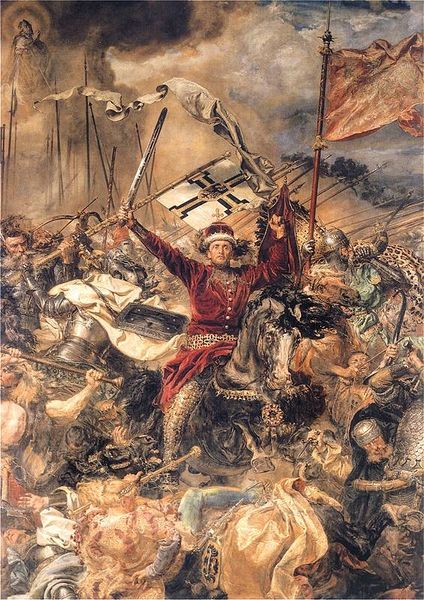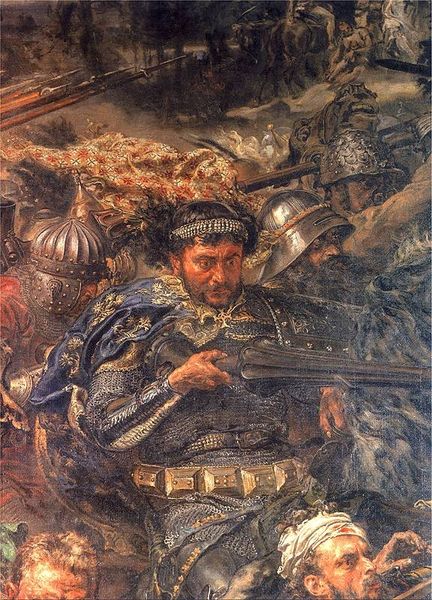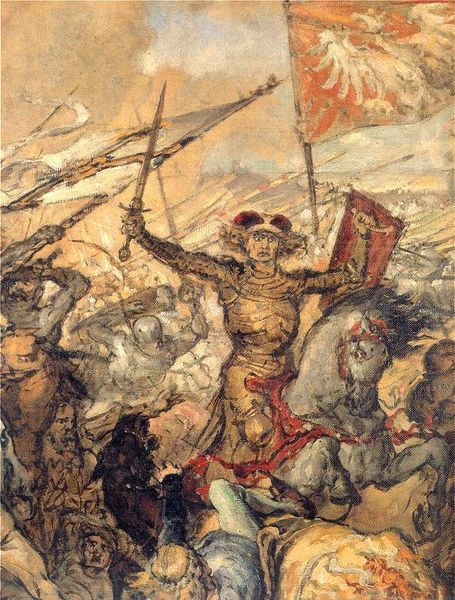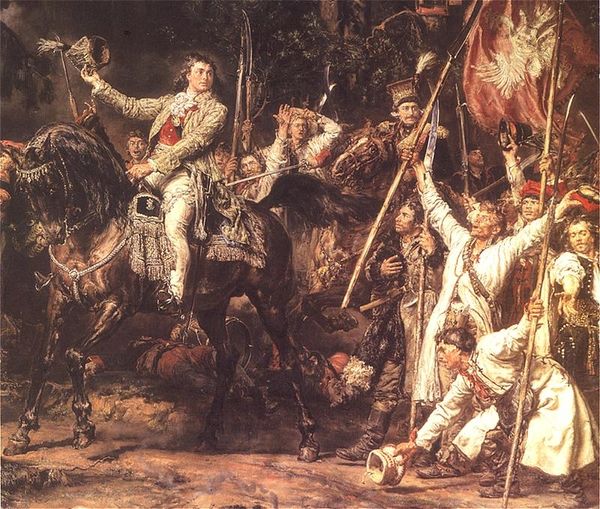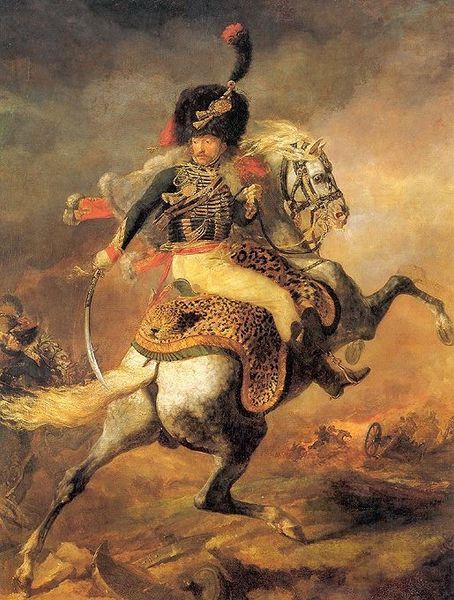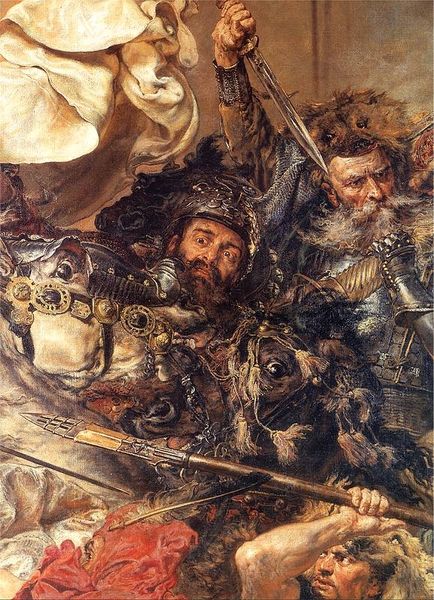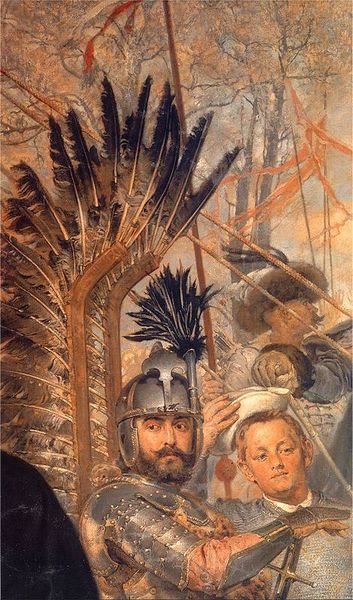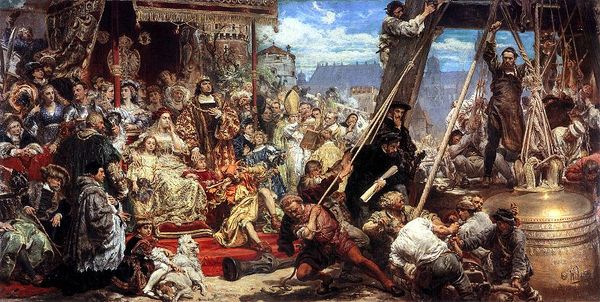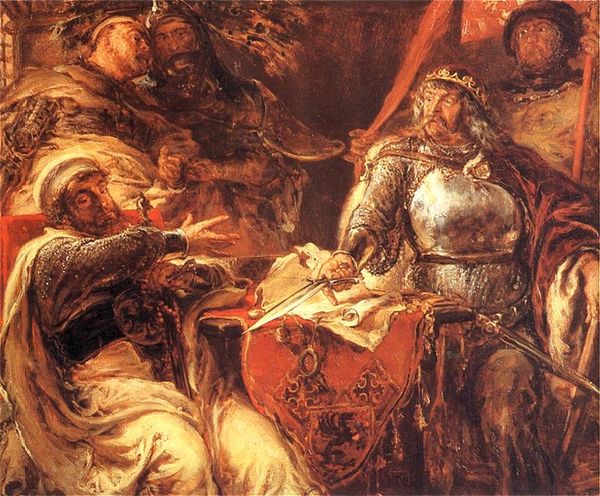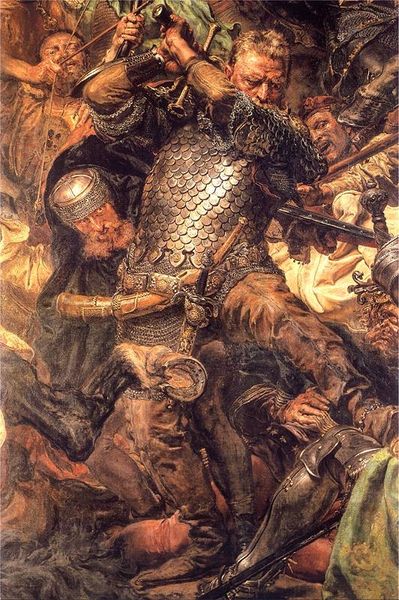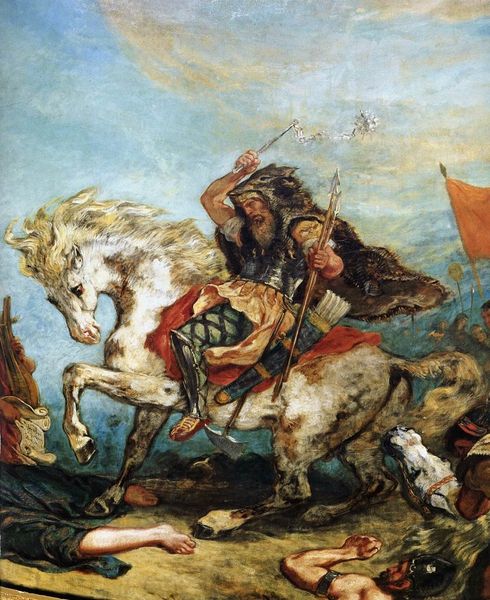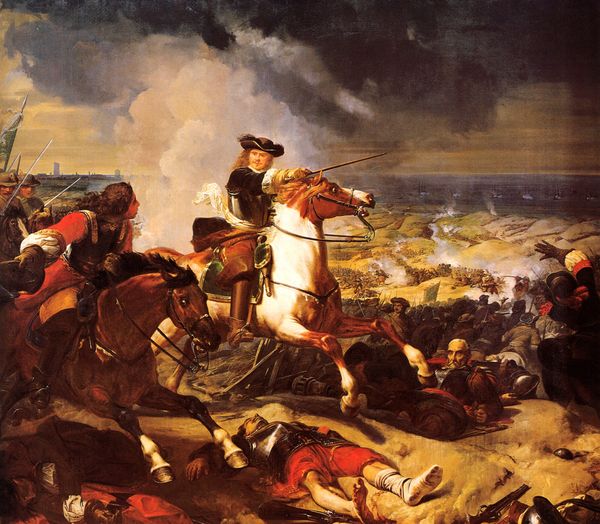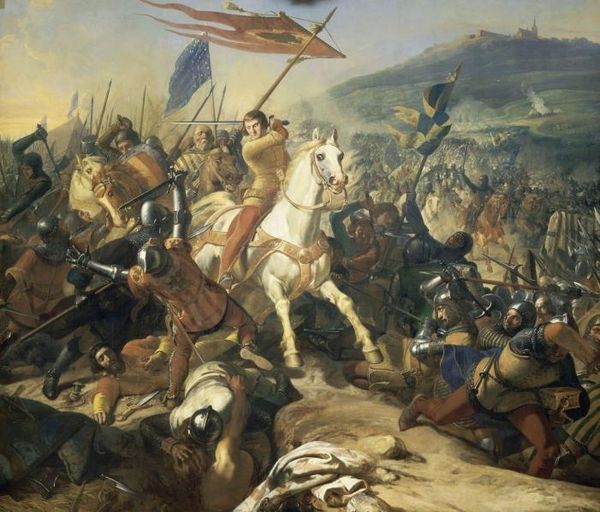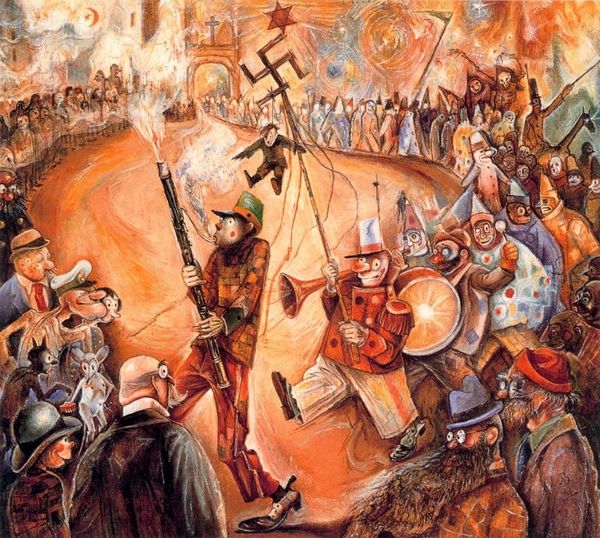
painting, oil-paint
#
portrait
#
narrative-art
#
painting
#
oil-paint
#
war
#
figuration
#
oil painting
#
famous-people
#
romanticism
#
history-painting
Copyright: Public domain
Editor: Here we have a detail from Jan Matejko’s “Battle of Grunwald,” painted in oils. There's so much action depicted here, the figures seem to burst from the canvas! I’m particularly struck by the ornate details of the clothing and weaponry. How can we approach understanding the impact of the material elements within a scene like this? Curator: The "Battle of Grunwald" is indeed dense, almost overwhelming. What interests me is to go beyond merely depicting an event to see how the material construction itself contributes to meaning. Let’s think about the pigments: How accessible were they? What sort of labor went into preparing them? Look at the saturated reds and whites - consider their cost. What statement does using precious materials make within a depiction of war, of immense labor and bloodshed? Editor: So, the cost and availability of materials influences the way the battle is represented, and maybe elevates it in the cultural memory? Curator: Precisely. And think about the scale of the finished canvas. It was not just a painting, but a massive enterprise consuming resources on many fronts. Who financed it? Who was meant to view it, and in what context? These aren’t just brushstrokes on canvas; they’re indications of an entire economic and social web. What impact did such a large-scale work of nationalist art have? Editor: It becomes clear that it’s more than just an image, but a symbol made through deliberate material and economic choices! Thank you for making that distinction. Curator: It is vital to consider that all visual art stems from a process involving choices about materials and techniques, and this profoundly shapes its meaning and reception, generation after generation.
Comments
No comments
Be the first to comment and join the conversation on the ultimate creative platform.
